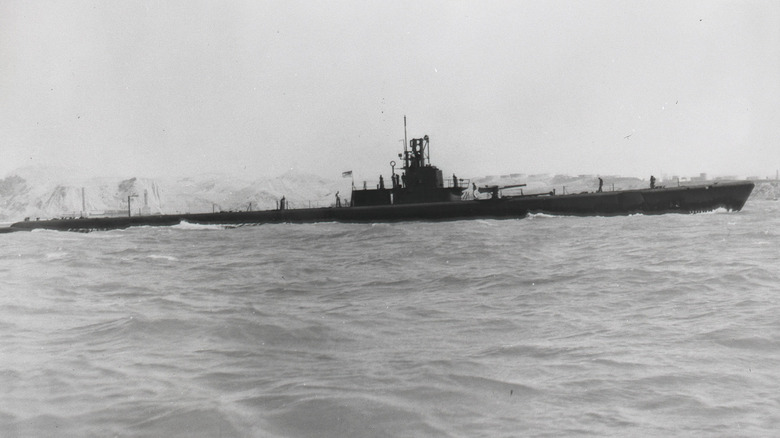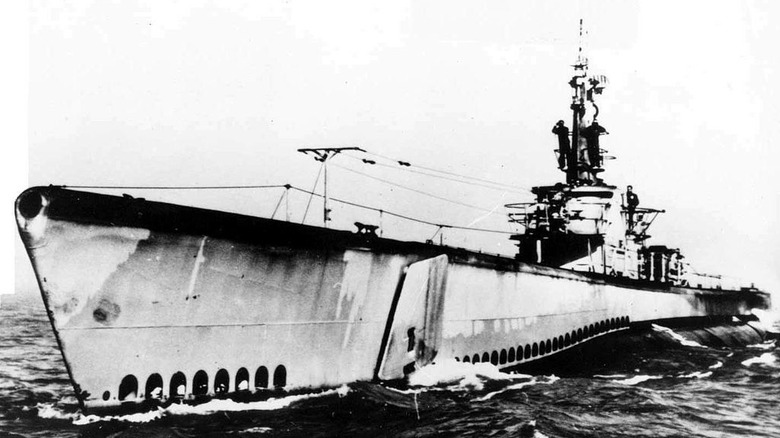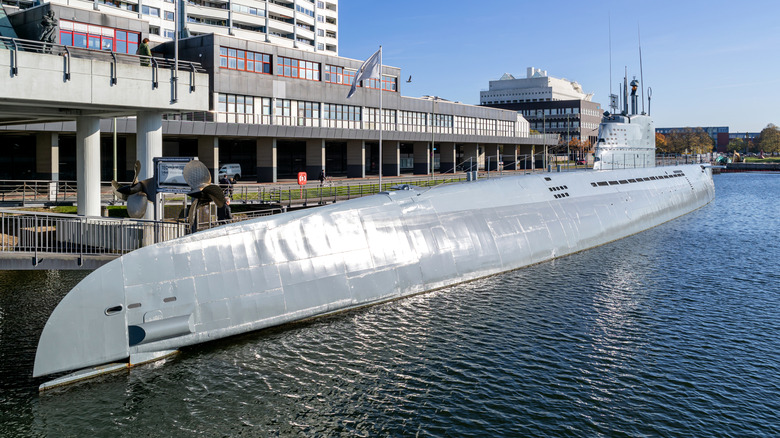Why Were Many World War 2 Submarines Shaped Like Boats?
Submarines were key for Allied and Axis forces throughout World War II. At the war's onset, Germany's fleet of U-boat submarines created a distinct advantage for the Nazi's Kriegsmarine.According to the U.S. National Park Service, German submarines sank roughly 3,000 Allied vessels throughout the conflict, playing a key role in disrupting Allied supply chains — downing 16,000 tons of merchant shipping. For the United States, submarines were one of its key strategic advantages in the Pacific. During the war, U.S. subs sank over one-quarter of Japan's entire fleet, despite constituting only 2% of the American navy.
Despite their significance, history buffs are often surprised when they research old pictures of these legendary World War II submarines. To most, submarines of the era closely resemble surface ships more than submergence vessels. So why do World War II submarines resemble boats? The reason all goes back to oxygen. At the time, submarines were powered by diesel-electric engines, which needed substantial amounts of oxygen to charge the batteries of their generators.
Take, for example, America's Gato-class submarine, which sported an extremely long hull and several sail and mast structures. For most casual observers, the vessel could be mistaken for a cruiser or battleship of its era. In fact, it wasn't until the decade after WWII that submarines began to look and operate like modern-day divers.
Form follows function
Running a diesel engine underwater was dangerous, as it would quickly eat through the submarine's oxygen reserves. Functionally speaking, this meant that subs couldn't travel far (or quickly) under the surface. Instead, they used their diesel engines to charge their electric generators while traveling on the surface before submerging. After a dive, submarines mostly just waited for potential targets. Submarines also needed to be on the surface to execute essential functions like replenishing the crew's oxygen supply and using its communication systems.
The USS Balao was powered by four diesel engines that could ratchet up to a surface speed over 23 mph — more than double its submerged speed. Although the Balao's 126-cell batteries could remain underwater for nearly two days, it could only do so at a speed of 2 mph.As is typical with subs of its era, the USS Balao-class's underwater operations were largely stationary. This caused World War II submarines to spend most of their time on the surface. For example, American submarines spent roughly 90% of their combat missions above the surface. As such, these vessels needed to be as adept at operating on the surface as under it.
A subsurface revolution
Submarines' transition from speedy surface ships that cosplayed as underwater vessels to long-range subsurface vessels began shortly after the end of World War II. The first domino came when the United States confiscated Germany's newest U-boat, the XXI. Although the XXI never saw combat during the war — all 120 were waiting for deployment by 1945 — it was by far the most advanced submarine of its era, constituting a major leap in operational effectiveness. The sub achieved new levels of power and speed while submerged,reaching a then-whopping 15 knots, or 17 mph. Most important, however, was the addition of a snorkel that could replenish the ship's oxygen reserves while submerged. This meant that, for the first time, submarines no longer needed to spend the majority of their missions above the surface. It also meant that subs could now conduct operations almost exclusively underwater. These operational changes inspired radically new designs, as engineers did away with seakeeping features to maximize submergence capabilities,killing the submarine's boat-like visage.
Further cementing this change was another major advancement in submarine technology born in the post-war era: nuclear power. Born out of the Manhattan Project, U.S. researchers developed the world's first nuclear propulsion engine. By 1955, the U.S. built the world's first nuclear submarine, the USS Nautilus. On its maiden voyage, the Nautilus traveled nearly 1,400 miles in 90 hours, setting speed, distance, and submergence-time records. Thus the modern submarine was born, a development that would change the course of naval warfare.


